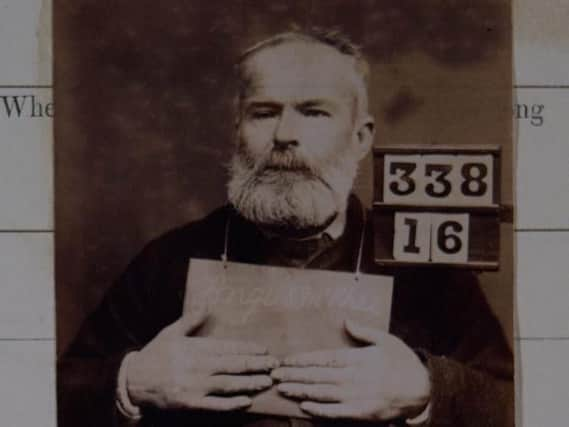Scotland's 'lunatic' Victorian murderers and poisoners who were spared death


Now ‘Prisoners or Patients? - Criminal Insanity in Victorian Scotland’, a free exhibition by the National Records of Scotland in Edinburgh opening tomorrow, reveals the crimes which horrified the nation, the perpetrators’ backgrounds and the dramatic twists and turns of how they lived out the rest of their lives.
It gives a glimpse into early penal polices and the infancy of psychiatry before mainstream drugs were available to treat conditions such as syphilis and epilepsy whose range of symptoms could prompt a diagnosis of madness.
Advertisement
Hide AdAdvertisement
Hide AdThe prisoner-patients spent years and sometimes decades in the criminal lunatic department at Perth Prison which was for those accused of murder and other serious crimes,
Among them was Angus McPhee, 26, from Benbecula, in the Outer Hebrides, who bludgeoned to death his parents and an aunt, was admitted in 1857, and spent half a century locked up, regarded as more or less continually deranged for the first three decades.
There was also Eliza Sinclair or Clafton who tried to slit her own throat before killing her baby daughter and young son.
SCOTSMAN ONLINE: SUBSCRIBE TO THE SCOTSMANDuring his trial and interviews with psychiatrists he spoke in Gaelic and his words were translated into English.
Professor Rab Houston of the University of St Andrews who curated the exhibition, said many of the mental health polices used for today’s prisoners had their roots in the Victorian era.
“I think the thing which really struck me was the amount of compassion shown to these prisoners and the effort put in to understand why the crime had been committed.
“There was a very rigorous process with dozens of testimonies from those who knew about the alleged crime or knew the accused, including household servants.
Prof Houston added: “The authorities wanted them admitted to the prison but they also monitored them. Some of the prisoner patients spent decades in the prison but the aim was to release them back out into society.
Advertisement
Hide AdAdvertisement
Hide Ad“But the Victorian ethos was about protecting the general public rather than the individual.”
Prof Houston said he was inspired to research the subject after giving a talk to prisoners in Barlinnie Prison in Glasgow about Dundee Lunatic Asylum in Liff.
“Afterwards a prisoner came up to me and said ‘that was totally brilliant, but can’t you tell us about the criminals?’”
He will now give a series of talks about the exhibitions in prisons across Scotland.
The exhibition includes a range of items such as letters, petitions, a crime scene map, court papers and medical reports.
The Prisons (Scotland) Act 1844 defined ‘criminal lunatics as ‘insane persons charged with serious offences.’
They were sent to Perth Prison from 1846.
During the 1860s the prison had about 600 inmates and 60 staff, with accommodation for 35 men and 13 females in the department for prisoner-patients.
* ‘Prisoners or Patients? - Criminal Insanity in Victorian Scotland’, Great Register House, 2 Princes Street, Edinburgh, 1-30 August 2019. 10am-4.30pm. Free.